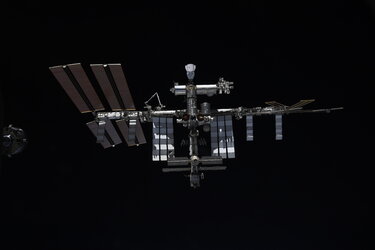Endeavour home after completing a special delivery to ISS
Space Shuttle Endeavour landed early this morning at the Kennedy Space Center in Florida after a flight delivering more living space, equipment and a bay window to the International Space Station.
Shuttle mission STS-130 made a total of 217 full orbits of Earth in a flight lasting 13 days, 18 hours, 6 minutes and 24 seconds since launch on 8 February.
"I feel very satisfied that the two European-built elements, Node-3 and Cupola, are working well and have become another showcase for Europe’s space industry and its outstanding capabilities. Equally important is that ESA meets its obligations resulting from the barter agreements with NASA, which called for the delivery of these two elements, laboratory equipment and services to NASA, in exchange for the launch of Europe’s Columbus laboratory and for launching and returning five ESA external payloads," said Bernardo Patti, Head of ESA’s ISS programme.
"Successful delivery and installation of Node-3 and Cupola also gives me personal pleasure when seeing astronauts enjoying the additional space and the view from the largest window in space. Now more than a third of the pressurised Station elements are designed and built in Europe, giving us even bigger responsibility as a major partner in the operation and utilisation of the ISS in future."

The total pressurised volume of the ISS is now 820 cubic metres, more than the cabin volume of the Airbus A340-600, the world’s longest airliner in operation. Up to 350 cubic metres of this is habitable. The mass of the orbital complex is more than 360 tonnes – more than the weight of an unfuelled A380.
The next Space Shuttle flight with major European participation will be STS-134, now targeted for launch on 29 July. This will be the last flight of Space Shuttle Endeavour, the penultimate flight of the Shuttle programme, and it will carry a major scientific instrument, the Alpha Magnetic Spectrometer, to the ISS together with a crew of six astronauts including ESA astronaut Roberto Vittori. AMS arrived last week at ESA’s ESTEC space research and technology centre in the Netherlands for final testing.
After that, ESA astronaut Paolo Nespoli will serve as flight engineer on Expeditions 26 and 27. His six-month mission to the ISS will begin in November 2010.















 Germany
Germany
 Austria
Austria
 Belgium
Belgium
 Denmark
Denmark
 Spain
Spain
 Estonia
Estonia
 Finland
Finland
 France
France
 Greece
Greece
 Hungary
Hungary
 Ireland
Ireland
 Italy
Italy
 Luxembourg
Luxembourg
 Norway
Norway
 The Netherlands
The Netherlands
 Poland
Poland
 Portugal
Portugal
 Czechia
Czechia
 Romania
Romania
 United Kingdom
United Kingdom
 Slovenia
Slovenia
 Sweden
Sweden
 Switzerland
Switzerland

































